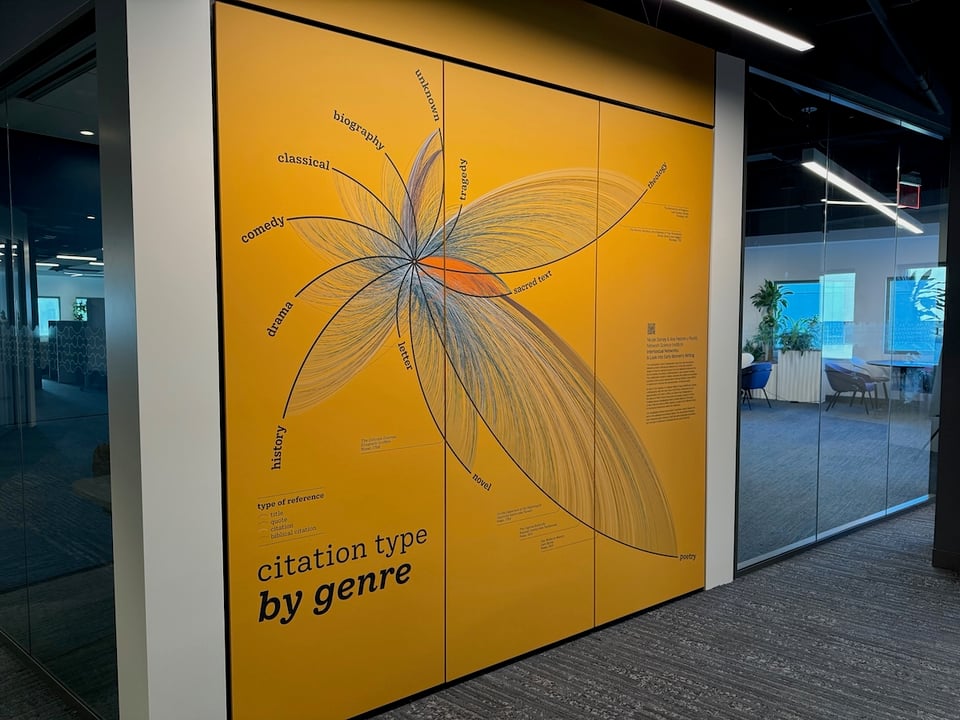Style and Personality
On the small but important difference between these two expressive notions
by Dan Cohen

[Jill Timm, Yellowstone Autumn, Mystical Places Press, 1998.]
It's been tough autumn. I hope this newsletter finds you with some measure of peace.
In Dennis Duncan's excellent Index, A History of the: A Bookish Adventure from Medieval Manuscripts to the Digital Age, he highlights, as he finally reaches the advent of Google, a key distinction: “There is personality in an index; in a concordance or a search bar there is not.” Those often-overlooked lists of subjects and page references in the back of books, handmade for centuries by experts in the craft, frequently exhibit details and flourishes that can shape one's understanding of a work, and delight the reader with obscure and amusing details chosen by the indexer. These indices can, of course, now be made in an instant by a machine — the dissection, categorization, and reassembly of words and topics a trifle for a computer program. But much is lost in that instant.
The concept of "personality" is worth keeping in mind as we continue to grapple with the uses and abuses of AI. Large language models have grafted style onto the concordance, a combination that has been disorienting over the last year. Yet there remains a difference between style and personality. Style can be mimicked not only by machines but by people, as the countless magazine articles in the style of Joan Didion or Hunter S. Thompson show. Personality, however, shines through in minute expressive details, not in overall stylistic modes.
The distinction is not restricted to text. I was fascinated by this interview with the opera singer Luigi Boccia, because the entire artistic enterprise of opera clearly hinges on those minute expressive details. Should the end of this line be sung with an open or closed throat, and what about the many other decisions affecting vocal timbre? These choices infuse a sung word with elation or angst or grief, or the countless mixture of colors between distinct emotions. And these shadings are, ultimately, selected and executed by the singer based on their interpretation of the human situations they are portraying.
So it is only by living, by experiencing similar situations in their lives, that opera singers can give distinction to their sound and phrasing, and since each life is different, so is each interpretation. It is for this reason that I worried in my last issue — in what may have come across as unusually Luddite for this newsletter — about the potential loss among young people in the skill of crafting these small but critical inflections given the onslaught of easily generated text, art, and sound.
The renewal of Snell Library on our Boston campus has begun to bear fruit, beginning with the opening of our first completely refreshed floor.

Libraries, like all buildings, accrete small changes over time due to the tick-tock of ever-present needs: a supply station here, an office there, a space for an academic program in one corner, a room for an extracurricular activity in another. Each of these alterations make clear sense in the now, but in aggregate they eventually balkanize a space and make its purpose opaque.
Working with MGA Architects, led by Katie Broh, we are seeking make the library legible again, thematically unifying each floor. The fourth floor, recently opened, is dedicated to studying — alone during individual contemplation and together in glass-enclosed collaborative rooms.
New glazing has restored an underappreciated skylight in the library's core. Walls and other cruft have been removed from in front of the windows around the entire perimeter of the building, opening up 360º views across campus. The byproduct of this wider aperture — greatly increased natural light — now allows plants to flourish across the floor. A low, homogeneous drop ceiling has been erased, raising the maximum height by 50%. Into that void, varied planes and textures have been placed. Additional acoustic engineering principles applied by the architects ensure the suppression of sound. A mixed furniture typology matches the diverse preferences of students. It still reads as a "library," but not one with long wood tables and banker's lamps.
We are also using some walls throughout the building to show off new work by faculty, with an emphasis on the interplay between humanistic and technological pursuits, creating an art gallery of scholarship.

[Cassie McMillan, "Who Run the Worid? Gender and the Social Network of R&B/Hip-Hop Collaboration, 2012-2020"]

[Nicole Samay and Ana Pastore y Piontti, "Intertextual Networks: A Look into Early Women’s Writing”]
Next to open will be the lower level, with a focus on collections: a greatly expanded space for archives and special collections, and the return of a smaller but mightier book collection, stripped of unused volumes like bound journals: grab-and-go novels and other immersive reading, books that are regularly checked out and consulted by students and instructors, new books by faculty members, shelves that are selected by faculty and my staff, and works in which the technology of the codex shines, or for which there are no digital surrogates. A collection with personality.
Thanks, as always, for reading, and happy new year.